From Rust to Renewal: Bringing Christ to Armenia through Playground Revitalization
Armenian Relief Mission, Volunteers, and Faith Bring Hope to the Village of Ujan

People at the revitalized playground (credit: Holly Abernathy)
The Armenian people are no strangers to suffering. “As you prepare to return to your homes, leave your hurt and pain with us. We will keep it for you,” said Murad from the village of Ujan, Armenia as he stood, a backdrop of mountains stretched out behind him, next to one long interconnected table adorned with fresh herbs, fruits, vegetables, lavash, and more, addressing the guests that would soon be returning to the United States. “Your five days’ work here in our village will last many years to come and add smiles to the faces of our children.”
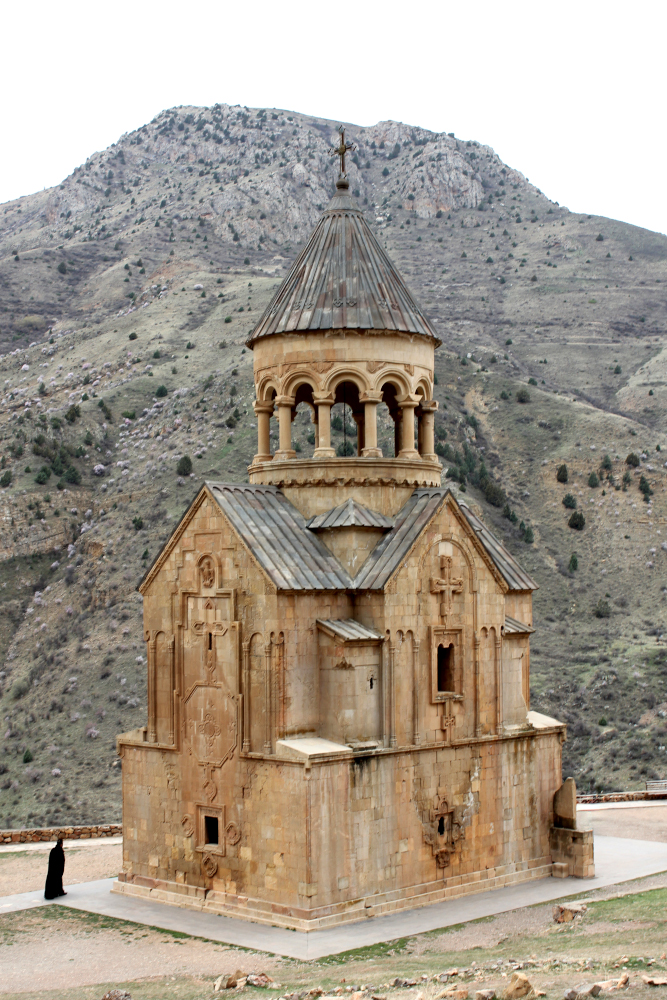 Armenia, landlocked by the nations of Turkey, Georgia, Azerbaijan, and Iran, owns a deep cultural legacy, its people marked by war and genocide, and an earthquake in 1988 that killed thousands and left hundreds of thousands homeless. Hurt and pain are deeply familiar to Armenians, but they are a people rich in spirit, resilient in nature, and full of genuine gratitude.
Armenia, landlocked by the nations of Turkey, Georgia, Azerbaijan, and Iran, owns a deep cultural legacy, its people marked by war and genocide, and an earthquake in 1988 that killed thousands and left hundreds of thousands homeless. Hurt and pain are deeply familiar to Armenians, but they are a people rich in spirit, resilient in nature, and full of genuine gratitude.
 With the backdrop of Mount Ararat, where Bible references suggest Noah’s Ark came to rest after the Great Flood, Armenians like Murad and many others from Ujan celebrated and expressed this inherent gratitude. Armenians and Americans dined side-by-side to celebrate the completion of one of many village playgrounds built in the former Soviet Republic of Armenia, the first nation to embrace Christianity as a state religion in 301 AD.
With the backdrop of Mount Ararat, where Bible references suggest Noah’s Ark came to rest after the Great Flood, Armenians like Murad and many others from Ujan celebrated and expressed this inherent gratitude. Armenians and Americans dined side-by-side to celebrate the completion of one of many village playgrounds built in the former Soviet Republic of Armenia, the first nation to embrace Christianity as a state religion in 301 AD.
Serving the People of Armenia Through Playgrounds
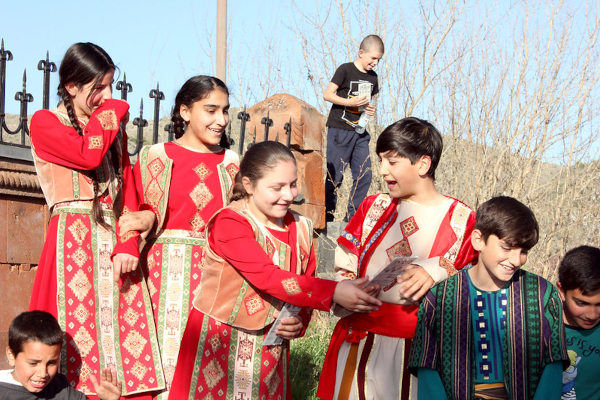 The mission team of eight included two teenagers and six adults (one from Church of the Redeemer in Highwood, IL, two from Winnetka Bible Church in Chicago, IL, and five from Green Hills Community Church in Nashville, TN) and was led by Steve and Rozik Kashian, both of Armenian heritage and the founders of the Armenian Relief Mission (ARM). “We've been putting playgrounds up in Armenia for the last 21 years, just a little bit after their independence,” Steve states. “Many of these areas where we've placed them have never had a playground at all. The equipment and materials come from playgrounds that are broken down and being replaced in the United States. Volunteers tear down the old, yet still high-quality playgrounds, others volunteer to store them or ship them to Armenia, and then we arrange for teams to come and help put them up. Very often, when we put it up, the local people help us in doing the work.”
The mission team of eight included two teenagers and six adults (one from Church of the Redeemer in Highwood, IL, two from Winnetka Bible Church in Chicago, IL, and five from Green Hills Community Church in Nashville, TN) and was led by Steve and Rozik Kashian, both of Armenian heritage and the founders of the Armenian Relief Mission (ARM). “We've been putting playgrounds up in Armenia for the last 21 years, just a little bit after their independence,” Steve states. “Many of these areas where we've placed them have never had a playground at all. The equipment and materials come from playgrounds that are broken down and being replaced in the United States. Volunteers tear down the old, yet still high-quality playgrounds, others volunteer to store them or ship them to Armenia, and then we arrange for teams to come and help put them up. Very often, when we put it up, the local people help us in doing the work.”
The playgrounds have been placed throughout Armenia, including orphanages, some poorer villages, and in Spitak where a tragic earthquake occurred in 1988. Approximately a year ago, a playground was placed right by the Azerbaijani border where there's been conflict, shooting, and threats from the Azerbaijanis.
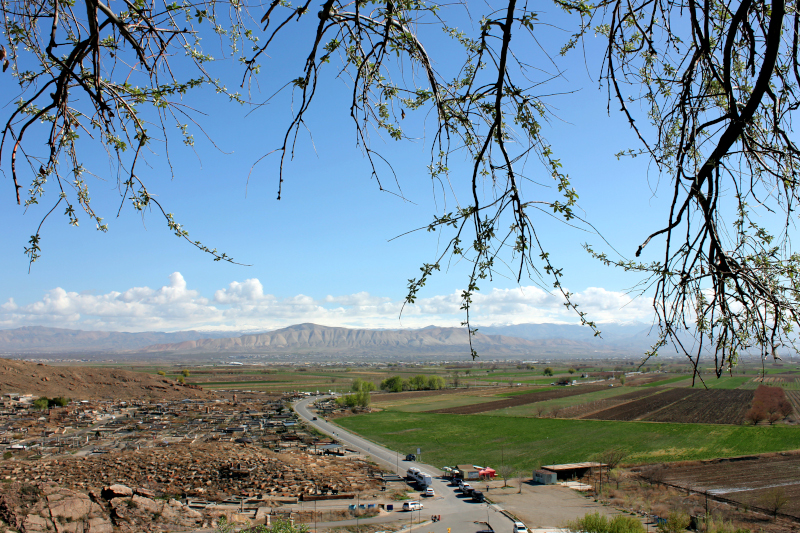 “This last playground we did was in Ujan,” Steve continues. “We just finished last week. Ujan is a very great village — and the people — we love the people there and they loved us back, and they participated in building the playground. We met the mayor, an amazing guy, 29 years old, the youngest mayor the town has ever had. He was very proactive with us and had personally done a lot of improvements in the area where the playground was placed. We built some great relationships there and hope to continue those relationships through our summer camps and programs.”
“This last playground we did was in Ujan,” Steve continues. “We just finished last week. Ujan is a very great village — and the people — we love the people there and they loved us back, and they participated in building the playground. We met the mayor, an amazing guy, 29 years old, the youngest mayor the town has ever had. He was very proactive with us and had personally done a lot of improvements in the area where the playground was placed. We built some great relationships there and hope to continue those relationships through our summer camps and programs.”
 In addition to other outreach efforts across the nation of Armenia, the Armenian Relief Mission and its volunteers have put up multiple playgrounds in the past. One such playground was in 2000 in Vanadzor, behind a medical clinic that the organization had just established. “The children there didn’t even know how to use swings,” Steve recalls. “We had to teach them how to use the swings and it was quite a bit of fun for all of us.”
In addition to other outreach efforts across the nation of Armenia, the Armenian Relief Mission and its volunteers have put up multiple playgrounds in the past. One such playground was in 2000 in Vanadzor, behind a medical clinic that the organization had just established. “The children there didn’t even know how to use swings,” Steve recalls. “We had to teach them how to use the swings and it was quite a bit of fun for all of us.”
The Origin of the Armenian Relief Mission
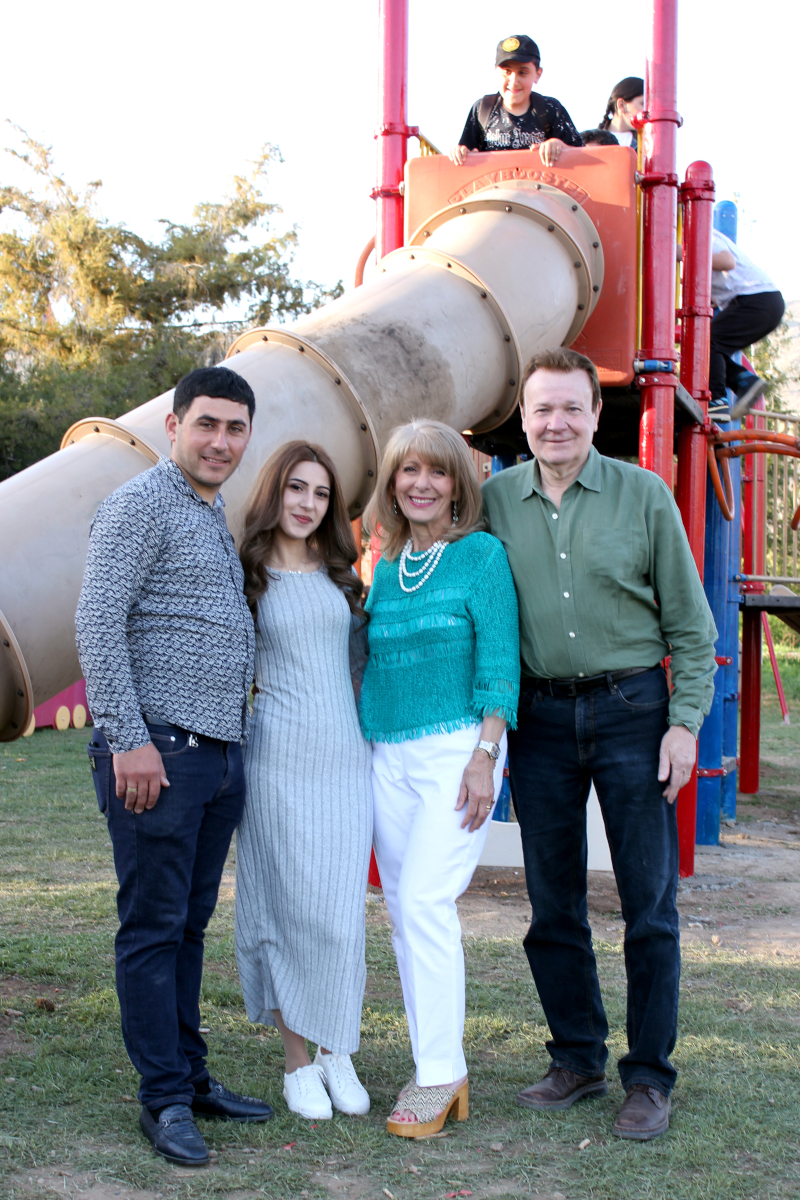 Steve and Rozik Kashian’s work in Armenia began when Steve received a phone call from a friend a few years after the 6.8 magnitude earthquake struck northwest Armenia in 1988, asking if he would be willing to assist with the ongoing relief efforts. Spitak, the epicenter, was devastated and surrounding villages were severely damaged. The earthquake occurred during school hours, so almost two-thirds of total deaths were children. The doctor wasn’t sure what he could do, but felt the urge to go, taking all the donated drug samples two suitcases could hold.
Steve and Rozik Kashian’s work in Armenia began when Steve received a phone call from a friend a few years after the 6.8 magnitude earthquake struck northwest Armenia in 1988, asking if he would be willing to assist with the ongoing relief efforts. Spitak, the epicenter, was devastated and surrounding villages were severely damaged. The earthquake occurred during school hours, so almost two-thirds of total deaths were children. The doctor wasn’t sure what he could do, but felt the urge to go, taking all the donated drug samples two suitcases could hold.
“The earthquake happened when Armenia was still under Communist Russia,” explains Steve. “It caused a complete collapse of the Armenian economy. The nuclear power plant had been shut down for safety reasons. There was no electricity. It was cold…a very dark and depressing place. When I asked a man there what I could do for them, he said ‘just come back.’ I realized then that I had more work to do there.”
In sub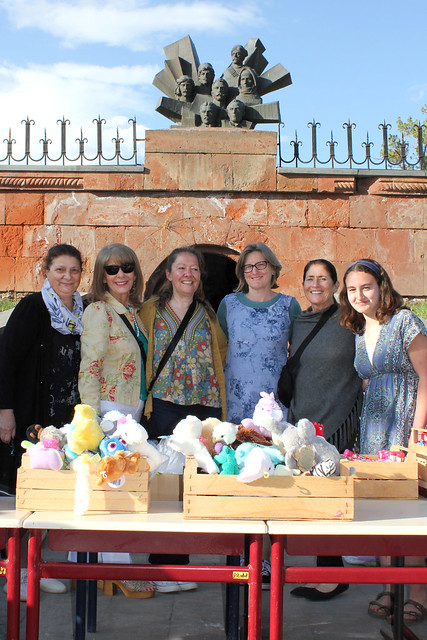 sequent trips, Steve helped establish a storefront pharmacy and by 1995 the permanent ARM Medical Clinic was established in Vanadzor. The clinic is staffed with all native Armenians, including highly skilled Dr. Ruzanna Hayrapetyan. “The high-quality medicine we provide here that comes from America, medication that you cannot find in Armenia — it not only helps and heals people, but it also saves people’s lives,” she says. This clinic continues to provide free diagnostic services, free patient care and free pharmaceuticals to the people of Vanadzor who need aid. Other members of the staff include a pharmacist, diagnostic technicians, and nurses. The clinic logs more than 400 patient visits each month.
sequent trips, Steve helped establish a storefront pharmacy and by 1995 the permanent ARM Medical Clinic was established in Vanadzor. The clinic is staffed with all native Armenians, including highly skilled Dr. Ruzanna Hayrapetyan. “The high-quality medicine we provide here that comes from America, medication that you cannot find in Armenia — it not only helps and heals people, but it also saves people’s lives,” she says. This clinic continues to provide free diagnostic services, free patient care and free pharmaceuticals to the people of Vanadzor who need aid. Other members of the staff include a pharmacist, diagnostic technicians, and nurses. The clinic logs more than 400 patient visits each month.
Although the Armenian Relief Mission’s primary work is through the clinic in Vanadzor, they also operate as the center of the ministry distributing clothing and toys, running kids’ summer camps, and installing playgrounds throughout the region, just like the most recent one in Ujan. ARM has also developed a program called “Adopt-A-Family” which provides food, heat, and clothing to around 300 families during the harsh winter months. Throughout the years, ARM has continued to grow and change as they meet people where they are and become aware of their needs. However, ARM’s mission remains the same: to care for the most vulnerable in Armenia.
The Poor, Sick, Orphans, and Widows
Rozik, Steve’s wife of 41 years, recalls that for the first six years Steve was coming to Armenia, she was unsure, but says the Lord called her to go.
“He changed my heart for the sake of the children,” Rozik says. “I started with the orphanages and realized how poor and desperate they were, and that we could do something for them that they could not do for themselves here, and we’ve seen the impact over the years. They see us coming back, they see our love for them, and they see no reason for us to come and help them. There’s no reason in their minds that we would come and put up a playground. They always ask, ‘What’s the gain? Who is paying you?’ We let them know that no one is paying us. We are just here because as a Christian, the Lord tells us to love you — because He loves you — and we love Christ, and we want to follow him. He tells us we are to take care of the poor, take care of the sick, take care of the orphans, and to take care of the widows.”
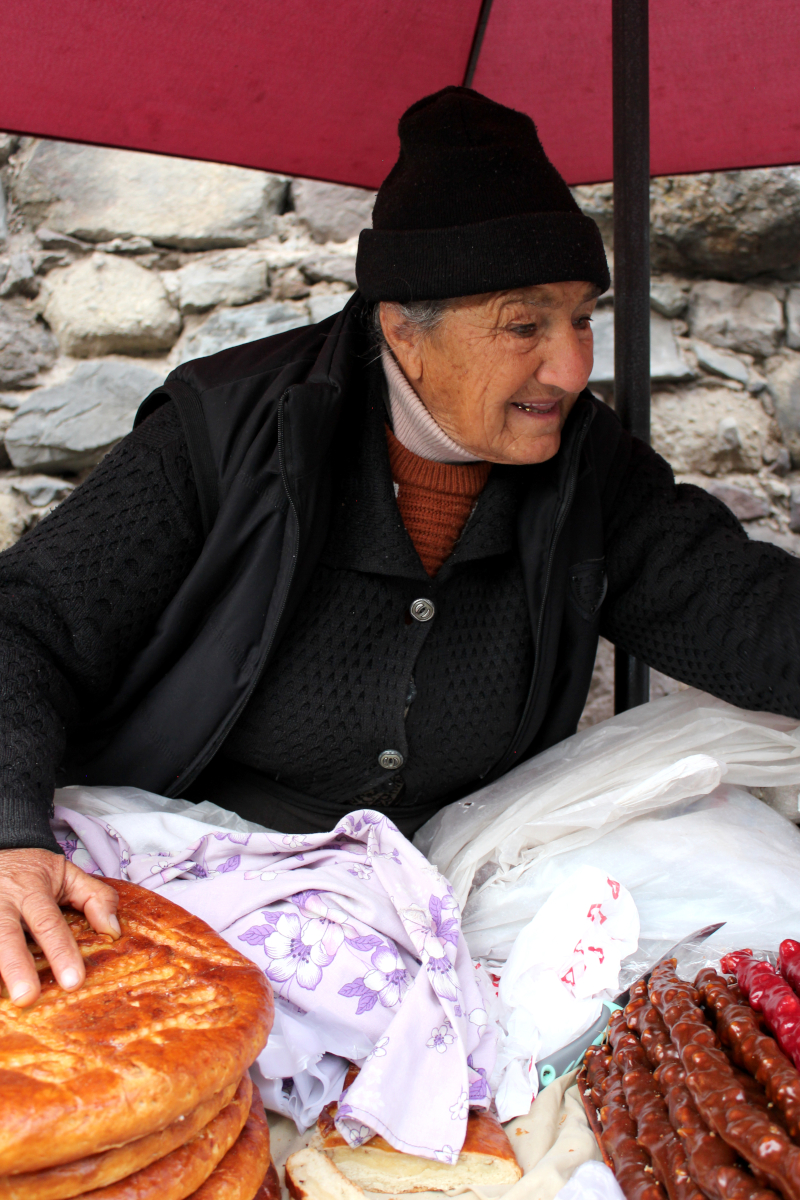 Steve recalls a time when he and Rozik were going with a driver who had taken them to his home. Steve overheard the Armenian husband and wife talking. “Do we have food for our guests?” the husband asked his wife. “Yes, we have food for our guests, but we won’t have food for our kids tonight,” she replied. “They’re only here tonight. Give them enough food,” the husband answered. “It was powerful,” Steve tearfully recalls. “Such hospitality.”
Steve recalls a time when he and Rozik were going with a driver who had taken them to his home. Steve overheard the Armenian husband and wife talking. “Do we have food for our guests?” the husband asked his wife. “Yes, we have food for our guests, but we won’t have food for our kids tonight,” she replied. “They’re only here tonight. Give them enough food,” the husband answered. “It was powerful,” Steve tearfully recalls. “Such hospitality.”
Rozik notes that “in Armenian culture, your guest is very much the owner of the house. They want to put the best there is out for you — the best they have is for the guest. It’s just like the widow’s mite in the Gospel of Mark in the Bible. We here in the United States give out of our abundance, but the people in Armenia give out of their emptiness.”
Armenia’s chronology of political turmoil, war, genocide, and the 1988 earthquake have all caused the Armenian people to suffer. “They have a history of suffering,” Steve says. “I don’t know any Armenians in the state who don’t have a relative who was killed during the Armenian genocide, and they carry this kind of deep-seated sorrow of what has happened in the past — yet it just amazes me because they still find joy. I think it has built character into the Armenian people. But they still carry this thing in their hearts of what has happened in the past, and all the hate that still goes on in the world.”
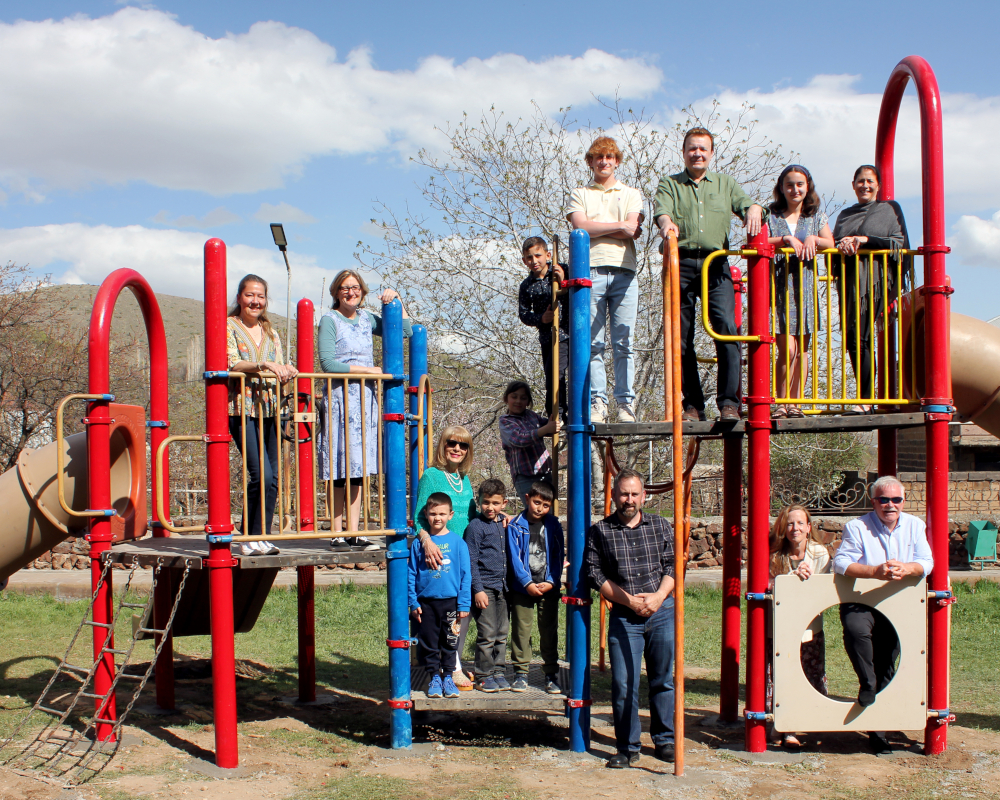 Some are still in very desperate situations, living in cardboard boxes and shipping crates. The motto of the Armenian Relief Mission is to serve, love, and feed them first. “It’s much easier to preach the Gospel when you care for their needs rather than just to say you need to repent or you are a sinner — when they’re in misery or sick, or they’re poor or are orphans,” said Rozik. “We were at an orphanage once and it was a very bad situation and we told them that we might not remember their name, but there is one person who knows who you are, where you are, and your name, and he loves you. That’s Jesus.”
Some are still in very desperate situations, living in cardboard boxes and shipping crates. The motto of the Armenian Relief Mission is to serve, love, and feed them first. “It’s much easier to preach the Gospel when you care for their needs rather than just to say you need to repent or you are a sinner — when they’re in misery or sick, or they’re poor or are orphans,” said Rozik. “We were at an orphanage once and it was a very bad situation and we told them that we might not remember their name, but there is one person who knows who you are, where you are, and your name, and he loves you. That’s Jesus.”
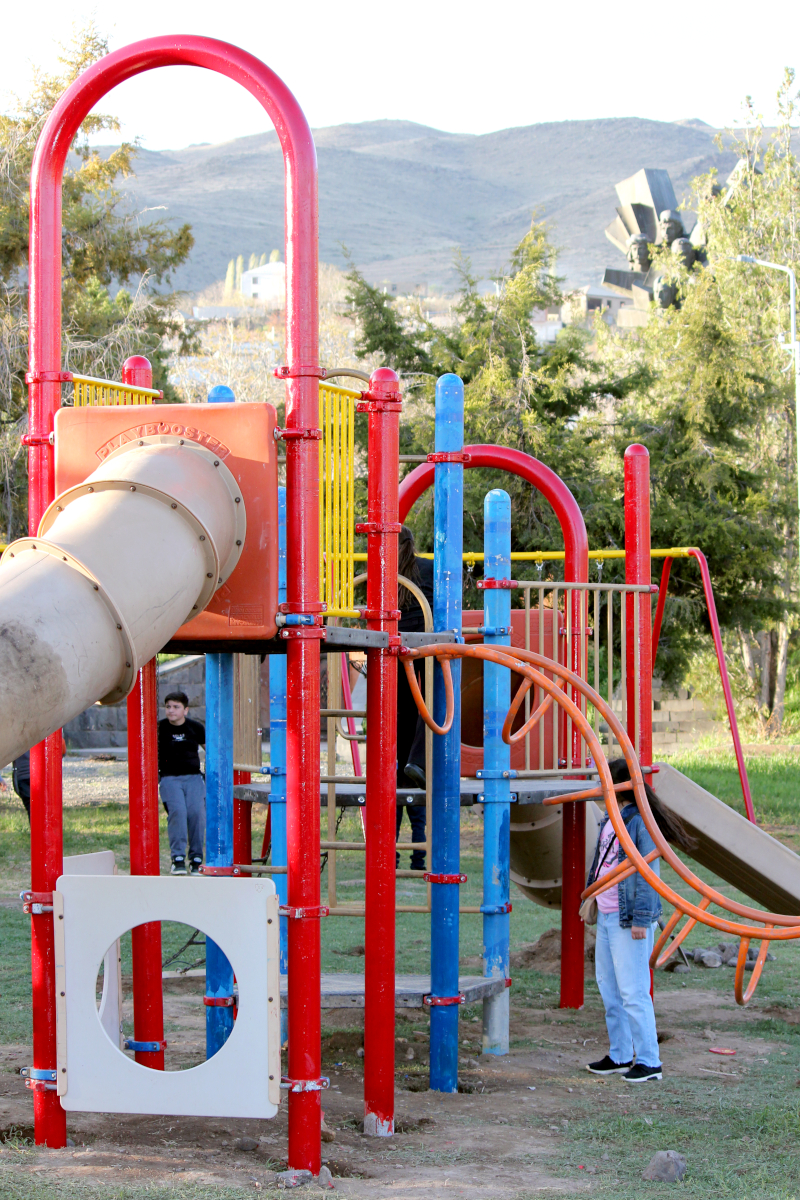 The evening of celebration for the completion of the playground in Ujan ended with traditional Armenian song and dance, food and festivities, and the fostering of relationships that will hopefully last a lifetime. “I love the people here in Armenia. They’re very loving, hospitable, genuine people. I want them to have a love for God and introduce them to Jesus Christ,” says Steve.
The evening of celebration for the completion of the playground in Ujan ended with traditional Armenian song and dance, food and festivities, and the fostering of relationships that will hopefully last a lifetime. “I love the people here in Armenia. They’re very loving, hospitable, genuine people. I want them to have a love for God and introduce them to Jesus Christ,” says Steve.
The team returned across multiple time zones to the United States filled with humility, love, and admiration for the people of Armenia and for the people of Ujan. Like the people from the village, the team also returned with smiles that will not soon fade, all being filled with the blessings and love of so many precious Armenian people. The Americans and Armenians all agreed together with Murad, from the village of Ujan, when he concluded his blessing: “We all together serve one Lord. Our oneness — our kindness is because we serve one Lord.”
Pray for the people of Armenia. If you would like to learn more, please visit the Armenian Relief Mission.
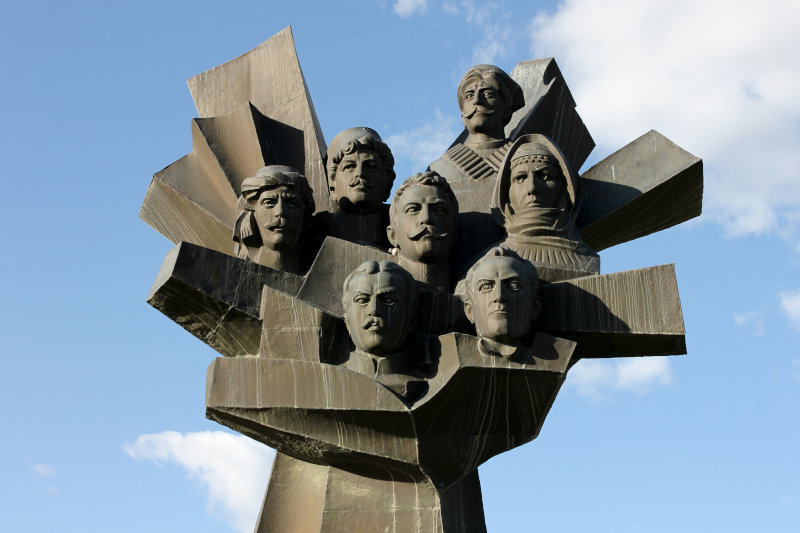
Holly Abernathy is a communications and creative arts professional. She works in a variety of media and lives in Nashville, Tennessee. For more information, visit 6qCreative.com. For more of her photos from the trip, check out her album on Flickr.